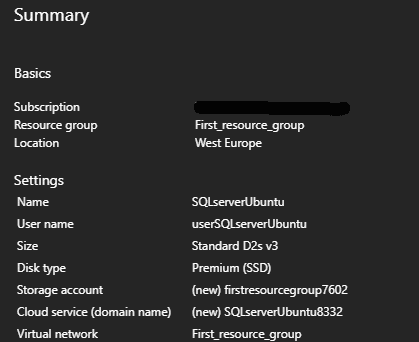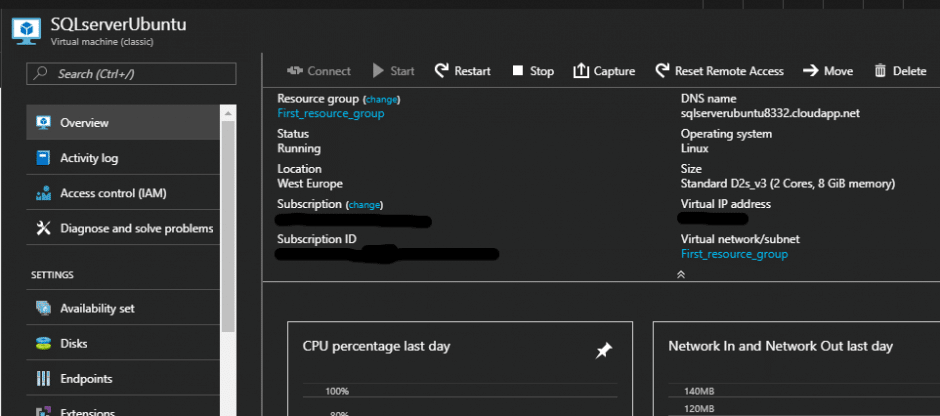This step-by-step guide helps a user having a Microsoft Azure account to create Microsoft Azure SQL Server on Linux (Ubuntu) (free license) and to use the SQL Server on Ubuntu with an SSH terminal.
Prerequisites
- SSH terminal;
- Account on Microsoft Azure.
Note: the license for Microsoft Azure SQL Server on Ubuntu is free of charge (for the end of 2017), although you will have to pay for used Azure resources.
How to Create Azure Linux Virtual Machine with SQL Server
Step 0
Use your account’s dashboard (see below) to start creating a new Microsoft Azure entity.
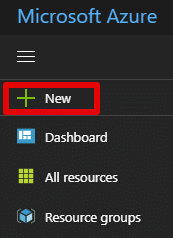
Click on “New” (see above), then see a menu (see below).
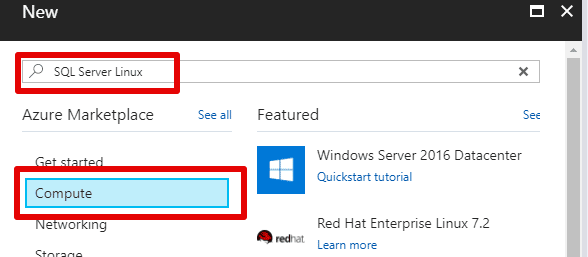
Choose the “Compute” section and type “SQL Server Linux” in the search field (see above).
After the search is done see a list of SQL servers available (see below).
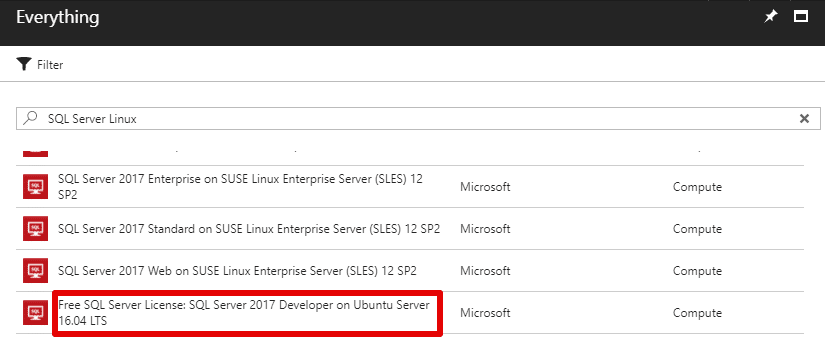
Find in the list above “Free SQL Server License: SQL Server 2017 Developer on Ubuntu Server 16.04 LTS” and click on it.
Then there will be a picture like this:
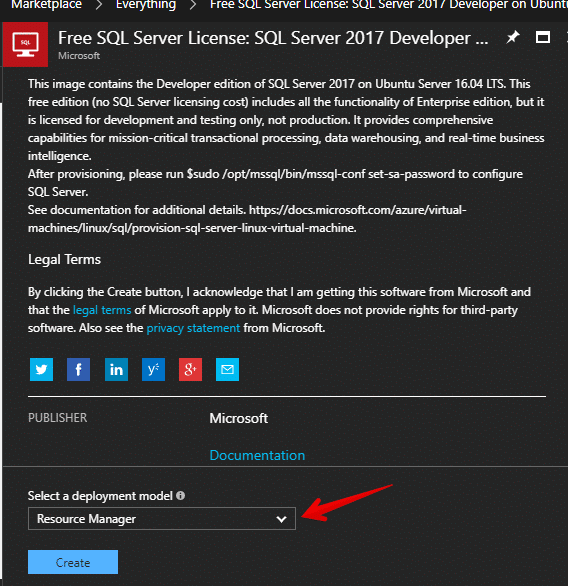
See where the red arrow is and change the “Resource Manager” to a simple “Classic” there.
Push the “Create” button to create SQL Server 2017 Developer on Ubuntu following the steps below.
Step 1
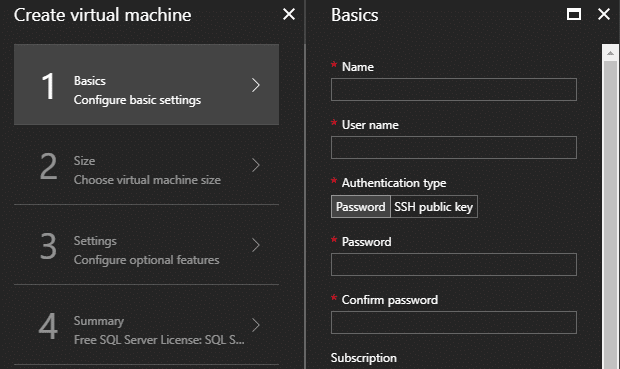
Name the SQL server, choose the User name, Password, etc.
Step 2
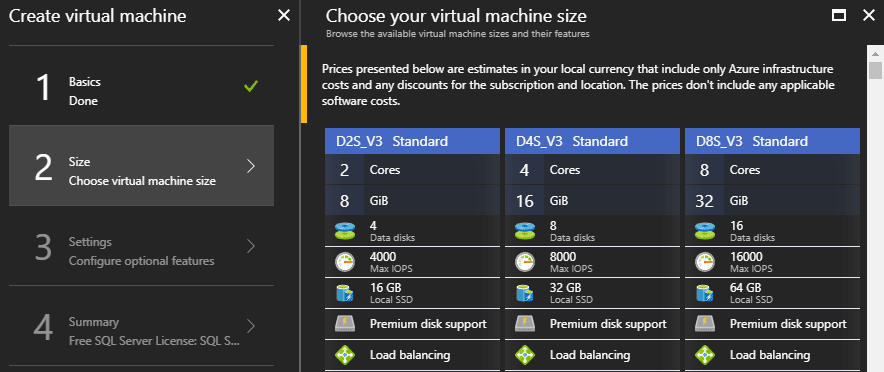
Choose the size of your SQL server on Ubuntu.
Don’t pay attention to pricing; this is not the case, this virtual machine goes for free of charge.
Click to “Select” button.
Step 3
See the parameters there and change them, if you want, then click on the “OK” button.
Step 4
See the Summary and check the options, names, etc.
Push the “OK” button.
That’s it!
Note: if you are waiting here too much, then just refresh the screen (sometimes it helps).
Now you should have a Microsoft Azure SQL Server on Ubuntu at your disposal, see the Overview of the SQL server on Ubuntu:
How to connect to Azure SQL Server on Linux (Ubuntu)
Connecting SSH Terminal to Ubuntu Server (Ubuntu Virtual Machine)
Take parameters for the SSH terminal connection to the Linux (Ubuntu) server from the parameters list of your Ubuntu virtual machine (Ubuntu server) created according to the previous chapter of this article.
For example, take “DNS name” from your Azure “SQL Server on Ubuntu” screen shown in the previous picture and copy it to the “Host” field in the Xshell New Session Properties window, if you use the Xshell terminal.
Preparing Azure SQL Server on Ubuntu
Type the following Microsoft instructions into your SSH terminal window:
curl https://packages.microsoft.com/keys/microsoft.asc | sudo apt-key add - sudo add-apt-repository "$(curl https://packages.microsoft.com/config/ubuntu/16.04/mssql-server-2017.list)" sudo apt-get update
After the last command, there should be a long list like the following.

Continue typing.
sudo apt-get install -y mssql-server sudo /opt/mssql/bin/mssql-conf setup systemctl status mssql-server curl https://packages.microsoft.com/keys/microsoft.asc | sudo apt-key add - sudo add-apt-repository "$(curl https://packages.microsoft.com/config/ubuntu/16.04/prod.list)" sudo apt-get update
After entering the last command there should be a long list similar to one from the above black-and-white window.
Continue typing.
sudo apt-get install -y mssql-tools unixodbc-dev echo 'export PATH="$PATH:/opt/mssql-tools/bin"' >> ~/.bash_profile echo 'export PATH="$PATH:/opt/mssql-tools/bin"' >> ~/.bashrc source ~/.bashrc sudo /opt/mssql/bin/mssql-conf setup
After entering the last (“setup”) command from the list you will be asked for two things.
(1) The first thing (see the following text in black-and-white):
Choose an edition of SQL Server: 1) Evaluation (free, no production use rights, 180-day limit) 2) Developer (free, no production use rights) 3) Express (free) 4) Web (PAID) 5) Standard (PAID) 6) Enterprise (PAID) 7) Enterprise Core (PAID) 8) I bought a license through a retail sales channel and have a product key to enter
Choose your option (Developer for this case).
(2) The second thing:
Enter the SQL Server system administrator password:
Type in the password.
Note: the password here must contain CAPITAL letters, small letters, numbers, and other (non-alphanumeric) symbols, although the system doesn’t say it clearly. 8 characters are the minimum length for the password.
Now the connection to the SQL server on Ubuntu should work.
Check its version just in case to see that the server is really up and running.
SELECT @@VERSION
The resulting text should be like this:
Microsoft SQL Server 2017 (RTM-CU1) (KB4038634) - 14.0.3006.16 (X64) Oct 19 2017 02:42:29 Copyright (C) 2017 Microsoft Corporation Developer Edition (64-bit) on Linux (Ubuntu 16.04.3 LTS)
Now the SQL Server on Linux (Ubuntu) is ready to use.
Testing SQL Server on Linux (Ubuntu)
A user can start using Microsoft Azure SQL Server on Linux (Ubuntu) by means of sqlcmd command-line tool.
Note: sqlcmd tool has been installed during preparations.
See below the final command to start to use the SQL Server on Ubuntu:
sqlcmd -S localhost -U SA -P '<SQL Server system administrator password>'
Note: <SQL Server system administrator password> is the same “SQL Server system administrator password” that you defined above answering the above question (2).
If successful, you should get to an sqlcmd command prompt from the Microsoft Azure SQL Server on Ubuntu:
1>
Note: any command typed after the prompt transforms the above “1>” to “2>”, then to “3>” and so on, but the counting stops when you type “GO” (then the counter starts from “1>” again).
A user may follow instructions from the above Microsoft site, having an sqlcmd prompt at the beginning of each command from the following command sequence.
CREATE DATABASE TestDB SELECT Name from sys.Databases GO
Here you have to have the following text on your screen (the list of databases available).
Name -------------------------------------------------- master tempdb model msdb TestDB (5 rows affected)
There is a way to continue testing.
USE TestDB CREATE TABLE IF NOT EXISTS Inventory (id INT, name NVARCHAR(50), quantity INT) INSERT INTO Inventory VALUES (1, 'banana', 150); INSERT INTO Inventory VALUES (2, 'orange', 154); SELECT * FROM Inventory WHERE quantity > 152; GO
Note: DON’T FORGET TO USE “GO” AT THE END OF A COMMAND SEQUENCE YOU WANT TO EXECUTE.
The resulting text should be like this:
id name quantity
------ ------------------- --------
2 orange 154
(1 rows affected)

